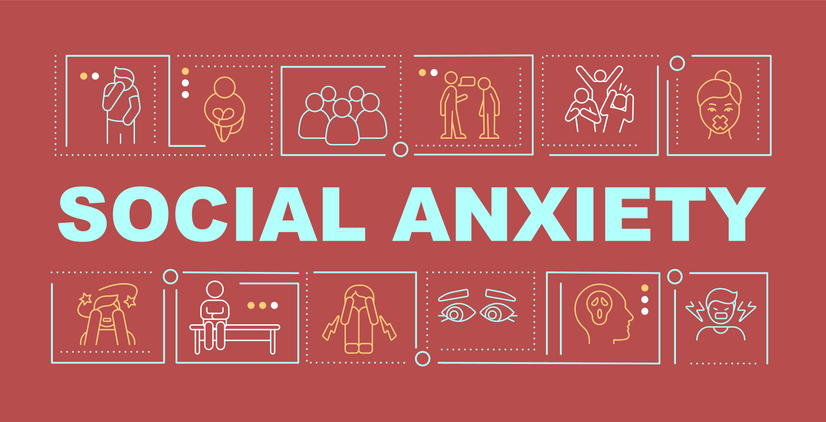Social Anxiety: More Than Just Shy or Self-Conscious
Most people worry about what other people think about them sometimes: “Do I look okay?” “Did what I just say make sense?” But for some people, these thoughts can be intense, troubling and persistent.
Social anxiety disorder involves these types of intense, troubling thoughts. A person with social anxiety disorder has a fear or anxiety about social situations where they may be scrutinized by others and be humiliated or embarrassed. The fear is out of proportion to the situation, lasts for at least six months, and causes the person to avoid the situation or endure it with intense anxiety (APA 2022)

Importantly, social anxiety is not simply shyness, and it is not the same as a lack of social skills, Thomas E. Brown, Ph.D. and Ryan J. Kennedy, D.N.P., FNP-C, write in a new book on social anxiety.
Brown and Kennedy also suggest that social anxiety is not only tied to specific anticipated social situations but involves “persistent or episodic fears that certain aspects of their own behaviors, thoughts, attitudes, or wishes in the past or present would be seen as inappropriate, harshly disapproved by others, or may be something to be ashamed of." People with social anxiety often describe their fears relating to what “others” — anonymous people who happen to be eating in the same restaurant or shopping in the same store — might think of them.
Social Anxiety Is Common
Social anxiety disorder is common, impacting about one in 10 teens and adults in the U.S. Among youth aged 13 to 17, an estimated 11% of females and 6% of males experience it. Among adults, about 14% of males and 12% of females experience it at some point in their lives. (Kessler et al. 2012). Social anxiety characteristics often appear during childhood and adolescence and the median age for onset is 13 years old (APA 2022).
Some children and adolescents with social anxiety are hesitant to attend school because of their fears of embarrassment and difficult social relationships with classmates and some students first experience social anxiety when they are stressed by academic challenges. In addition, individuals who are members of a racial, ethnic, sexual, or psychosocial minority within their school or community may be more likely to experience social anxiety (Brown and Kennedy).
Help Is Available
“With appropriate treatment, the intense stresses of social anxiety can gradually be overcome.” Thomas E. Brown, Ph.D. and Ryan J. Kennedy, D.N.P., FNP-C, Social Anxiety
Despite distress and problems caused by social anxiety disorder, only about half of people with it seek treatment and often only after many years of symptoms (APA 2022). Even though there are effective treatments available, many people are hesitant to describe their symptoms even to a clinician, Brown and Kennedy wrote.
Social anxiety can be treated with psychotherapy (individual, family or group), behavioral therapy, medication, or a combination. Therapy can provide a safe environment for talking about experiences, learning about the disorder, and developing coping strategies.
The authors highlight one especially helpful type of group intervention: Program for the Education and Enrichment of Relational Skills (PEERS), developed by Elizabeth A. Laugeson, Psy.D., at the University of California, Los Angeles. The program provides age-appropriate strategies for developing social skills for positive social interactions and learning how to respond to problematic social situations.
References
- Brown, T.E. and Kennedy, R.J. 2025. Social Anxiety: Hidden Fears and Shame in Teens and Adults APA Publishing. https://www.appi.org/Products/Anxiety-Disorders/Social-Anxiety
- Kessler, R. C., et al. 2012. Twelve-month and lifetime prevalence and lifetime morbid risk of anxiety and mood disorders in the United States. International journal of methods in psychiatric research, 21(3), 169–184. https://doi.org/10.1002/mpr.1359
- American Psychiatric Association. 2022. Diagnostic and statistical manual of mental disorders (5th ed., text rev.). https://doi.org/10.1176/appi.books.9780890425787
